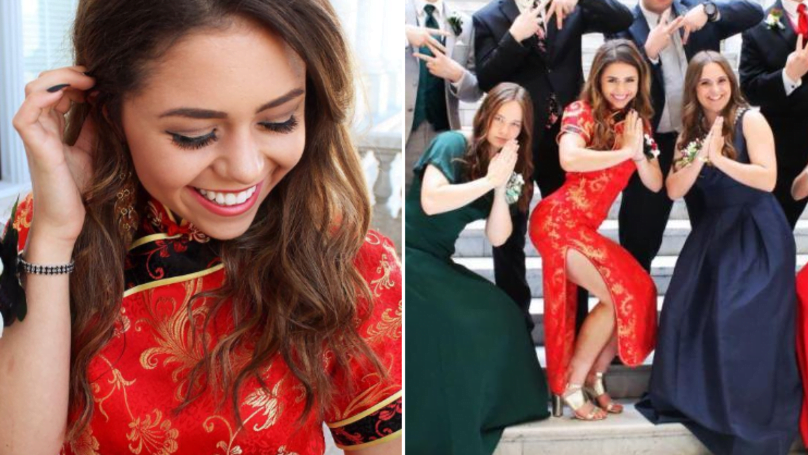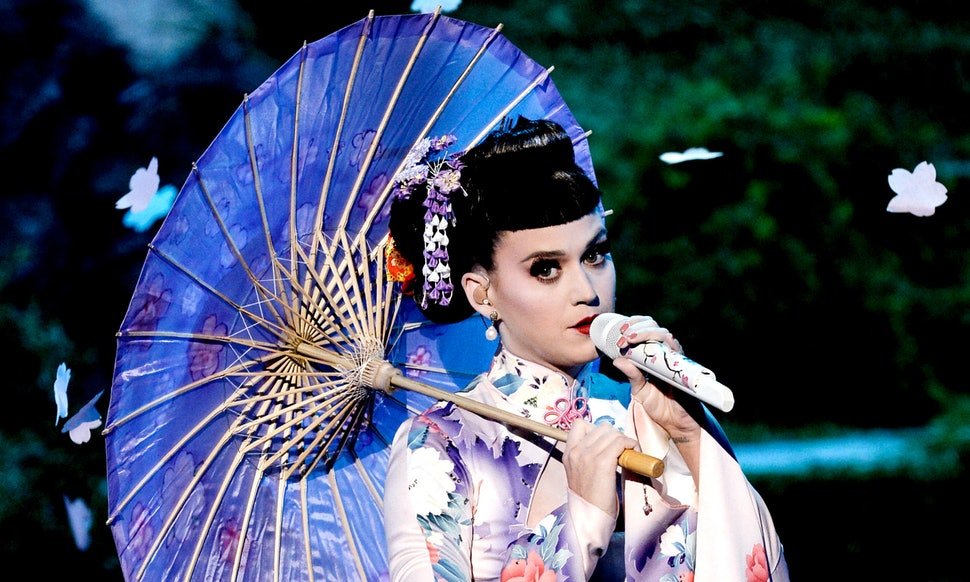Less than 24 hours since the Met Gala 2018 (formally known as the Costume Institute Gala at the Metropolitan Museum of Art, New York City) took place and there was heavy debate taking place on social media about whether it entailed cultural appropriation. With this year’s theme being ‘Heavenly Bodies: Fashion and the Catholic Imagination‘, there has been a certain degree of heat that the exhibition and its guests have had to face, despite the stunning artistry behind the pieces on display and the attending guests’ costumes.
The criticism that the exhibit has faced is that religion does not need to be turned into a costume, and complaints from predominantly white Catholics are rising, mainly along the lines that cultural appropriation works both ways – if they can’t steal our culture, then we shouldn’t steal theirs (despite Catholicism not even being a solely white religion anymore). This is coming at a time when cultural appropriation debates have come back into the limelight after separate instances caused anger among varied demographics.
The first is a prom photo shoot of a young girl that went viral a few days ago, showing her wearing a bright red dress clearly inspired by Chinese traditional clothing and posing with her friends with all of them folding their hands. Despite the backlash she received over the shoot, not only has she insisted that she is merely appreciating a culture, but is only garnering fame – including debates on news channels.

Image Source: Know Your Meme
The other two instances caused outrage among social media circles, specifically K-Pop fans. One was a video of a Korean reality show, where a popular Korean-Chinese girl group did a mocking, incorrect Bharatnatyam performance to Daler Mehndi’s Tunak Tunak Tun. The second was when the video for a newly debuting girl group showed one of the members wearing traditional henna designs for purely aesthetic purposes.
This is not the first time that South Asian culture has been mocked by East Asian cultures before, with multiple reality shows and idol groups having indulged in racist jokes. When South-Asians criticised this as being disrespectful, not only did it cause non-desi K-Pop fans to retaliate with racist rhetoric (a major problem in k-pop fandoms) but also lead to some desi fans themselves calling them “too sensitive” and apologising “on behalf” of the desi community.
So, what makes all these instances different from one another? Are they all just examples of being overly sensitive and suppressing free speech and imagination? Or is there a more complex structure of power and oppression that is not immediately apparent?
The criticism that the exhibit has faced is that religion does not need to be turned into a costume.
Simply put, cultural appropriation is the act of stealing someone else’s culture, reducing it to an aesthetic or an accessory that can be worn and shed at the convenience of the appropriator. This adoption of someone else’s culture always comes at the cost of the person whose culture is being appropriated.
Take, for example, the trend of wearing bindis and mehendi designs to music festivals. Traditionally, both these things have belonged to South Asian cultures (mehendi/henna belonging to West Asian and African cultures, as well) – yet, when people from these cultures wear them, they are degraded.
They are told to “act more Western”, to go back where they came from if they wanted to participate in these acts. But when someone outside of the culture adopts it, especially white people, it’s considered the epitome of beauty and style. Something that holds meaning to a minority is used as a weapon against them, but then stripped of its meaning and turned into a style statement by someone else.
Similarly, white people choosing to wear sombreros and speak in false, offensive Mexican accents on Cinco de Mayo, or adorning Native American headdresses for stylistic photoshoots, or putting chopsticks in their hair – these are all instances of reducing cultural symbols into meaningless items to be bought in shopping carts.
You might ask yourself, how then am I supposed to show appreciation for a culture if you insist on keeping traditions within a community? After all, creating further boundaries only succeeds in emphasising differences. How is it any different from when we wear pants and shirts and speak English? Those are not inherently South-Asian culture either. Why is it not just as taboo for us to straighten our hair and colour it blonde as it is for a white person to be wearing cornrows?
This is where we look at the difference between appropriation (an act of theft), appreciation (an act of respectful admiration) and assimilation (an act of blending in). Choosing to meet Western standards of style, language and aesthetic is something that most minority cultures have done for years, and it has not always been an easy choice to make.
Also Read: White Mediocrity v/s PoC Excellence: A Thinkpiece
It is often one that has stemmed from the need to be taken seriously, to not be demeaned and mocked, discriminated and hated against in a society that could never fully understand one’s culture. In addition, Western clothing and language are impossible to appropriate given the violent method in which they were spread across the world.
This is the same reason why the Met Gala debate is not really a debate, given that Catholicism – and Christianity – is not a religion that belongs solely to a specific culture or ethnic identity. For years, Christianity has erased other religions, partaken in forceful conversion, and spread itself across borders in a way that prevents it from belonging solely to one culture or group.

Image Source: India Times
Every guest who attended was of Christian and Catholic background – and the ones who were not were mimicking not the religion but famous paintings based on it. When a religion and culture is forcefully spread the way Christianity has, it is impossible for it to not seep into the sphere of art – which includes fashion. Moreover, cultural appropriation always comes with negative effects on the culture being stolen, given the power imbalance in play – and the Catholic Church happens to be an incredibly powerful institution.
The fact that the Vatican and the Pope not only approved of the theme but also donated dozens of pieces to the exhibition is noteworthy – because one of the biggest differences between appreciation and appropriation is permission to participate.
That’s the difference between a white person getting a mehendi design from a commercialised, Western-run shop (since commodification of other cultures is fairly common) and getting a design from a shop or business run by a person who belongs to that culture that henna/mehendi (when getting designs that hold traditional meaning; henna as temporary ink itself cannot be appropriated, it is the designs made with it that are appropriated).
The permission to participate shows not only a willingness to learn and perform under the guidance of someone who would teach you the full depth of what every aspect of the culture means, but also emphasises the purpose of partaking – wanting to genuinely learn and not simply reduce it to an aesthetic. The negative effects of cultural appropriation are not always apparent to those of us who constantly live surrounded by the culture we come from.
when someone outside of the culture adopts it, especially white people, it’s considered the epitome of beauty and style.
It’s not surprising that when cultural appropriation debates happen, it is always South Asians living in South Asia who come to the defence of the appropriator, calling the entire ordeal an overreaction. We have always loved sharing our culture, and the excitement we feel seeing ourselves represented in any shape or form fuel our defences, regardless of the method in which this representation occurs. Our tourist industries, our small businesses, our attempt at seeking validation have always come from trying to create proximity to the West – which includes letting them take our culture with them.
But these negative effects are a lot more apparent to people who live around appropriators. Think of a young Indian kid growing up in America who has to constantly be bullied in school for bringing his “disgusting, curry smelling” lunch, the mother being nervously stared at when she wears a bindi or salwar kameez in public, the vile hate speech thrown their way when they adorn their hands with mehendi that smells far too fragrant for Western sensibilities.
Imagine them spending years practising their culture quietly before they have no choice but to try and blend into the world they live in – and then imagine their feelings when they see someone outside of their culture do these very same things they were hated for and receiving praise instead.
The treatment of cultural objects as a costume to be adorned for the sake of looking pretty comes with the luxury of being able to take it off at the end of the day and never having to deal with the burden of constantly defending and performing the culture that it belongs to – which holds true for anybody who appropriates a culture they don’t come from.
Appreciating a culture should mean visiting the place it comes from, actively engaging with people who come from it, learning the language, promoting the literature, art, cuisine, boosting the people from it so they can tell their own stories – not treating it like an outfit of the day.
Cultural appropriation only sends the message that our cultures continue to be something that can be taken and stolen without our permission. Not only are they a reduction and oversimplification – an act that adds to existing stereotypes about said cultures – but also promote the idea that cultures and tradition are only valid, meaningful and safe when practised by someone who does not belong to them.
Also Read: Cultural Appropriation Of The Dongria Kondh By Amoh By Jade
Featured Image Source: Kevin Winter/Getty Images Entertainment/Getty Images





What’s with koreans and Tunak Tunak tun, I have seen Indian culture being mocked on korean shows too many times, and the song is always there. In Strong women do bong soon, you are beautiful, and another I can’t recall why are they obsessed with this song?